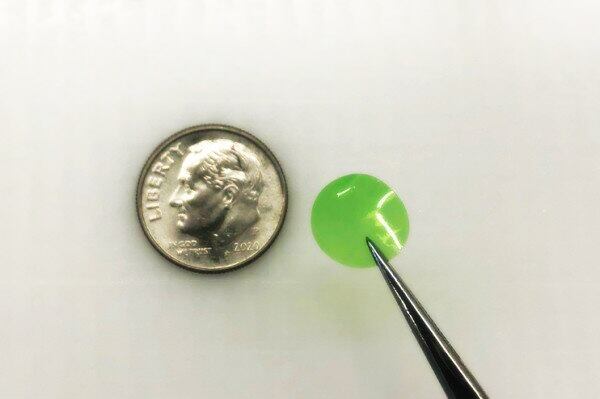Glucose, lactate, electrolytes, and dissolved oxygen all provide key insights into health and performance. Engineers at Tufts University suggest they are one step closer to being able to continuously monitor levels non-invasively in real time.
The new invention, reported in the journal Advanced Functional Materials, unveiled a silk-based material placed under the skin that shows blood oxygen levels. When placed under a lamp, the sensor glows brighter or dimmer when exposed to various levels of oxygen in the blood.
Smooth as silk
The novel sensor is made from fibroin, which is a gel formed from the protein components of silk. The silk fibroin proteins have unique properties that make them especially compatible as an implantable material. When the fibroins are formulated into a gel they can be assembled in such a way that the structure can survive under the skins anywhere from a few weeks to over a year. The researchers noted that the fibroin is unlikely to invoke an immune response once it dissolves in the body.

"We can form it into films, sponges, gels and more. Not only is it biocompatible, but it can hold additives without changing their chemistry, and these additives can have sensing capabilities that detect molecules in their environment,” said David Kaplan, Stern Family Professor of Engineering in the Tufts University School of Engineering, and lead investigator of the study.
The additive used is called PdBMAP, a water-insoluble oxygen-sensing chromophore. PdBMAP glows when exposed to light of a certain wavelength and the glow has an intensity and duration that is proportional to the level of oxygen in the environment.
“The silk gel is permeable to the fluids around it, so the PdBMAP senses the same oxygen levels in the surrounding blood. PdBMAP is also useful because it glows, or phosphoresces, when exposed to light that can penetrate the skin. Other sensor candidates may only respond to wavelengths of light that cannot penetrate the skin,” the report noted.
Key takeaways
The researchers found that the implanted films successfully sensed oxygen in vivo throughout a range of physiological soluble oxygen concentrations in real-time. The report noted that these results point to the novel, functional, and translational utility of silk protein-based biomaterials as a degradable host substrate for oxygen-sensitive chromophores.
“These new silk-based oxygen sensing films provide significant benefits in comparison to other commonly used materials, like poly(HEMA), PCL, and PLA, as the silk films exhibit biocompatible properties of a natural material and mechanical robustness of synthetic material,” the report said. “This work demonstrates the utility of silk protein as a platform for implantable, physiological sensors. In particular, the work highlights a naturally-derived scaffold alternative to synthetic materials in optical oxygen sensors. The versatility of silk-based material platforms and the results above contribute to the advancement of biosensing systems, particularly those that incorporate into the native tissue and provide continuous health monitoring.”
Kaplan said the oxygen sensor is a proof of concept for a range of potential sensors and there are implications toward the use of the material in other physiological sensing applications.
"We can envision many scenarios in which a tattoo-like sensor under the skin can be useful," explained Tom Falcucci, a graduate student in Kaplan's lab who developed the sensor. "That's usually in situations where someone with a chronic condition needs to be monitored over a long period of time outside of a traditional clinical setting. We could potentially track multiple blood components using a sensor array under the skin."
Source: Advanced Functional Materials
(2022) DOI: 10.1002/adfm.202202020
“Degradable Silk‐Based Subcutaneous Oxygen Sensors”
Authors: Thomas Falcucci et al.




